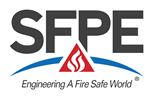Abstract
Te Papa Tongarewa, the national museum of New Zealand, stretched the bounds of fire engineering design when it was built. Designed at a time when fire zone models and nodal evacuation simulations were on the forefront of fire engineering design, the building represented a heavily engineered approach to fire safety with a complex array of fire safety systems. This paper outlines the case study of a reassessment of the museum using computation fluid dynamics and agent based evacuation modeling. Despite safety factors applied in the original design, shortfalls were identified between the time required to evacuate and the time until conditions become untenable. Whilst these tools add a level of complexity to the assessment, they have enabled engineers to better understand the interactions between fire, smoke, the building and its occupants. This has enabled engineers to make small, cost-effective improvements to the building to make it safer, and to better protect valuable artifacts and exhibitions.
Presentation
Resources
| Paper | Presentation | ||
|---|---|---|---|
| HTML | HTML | ||
| Resources Archive File (.zip) | |||


